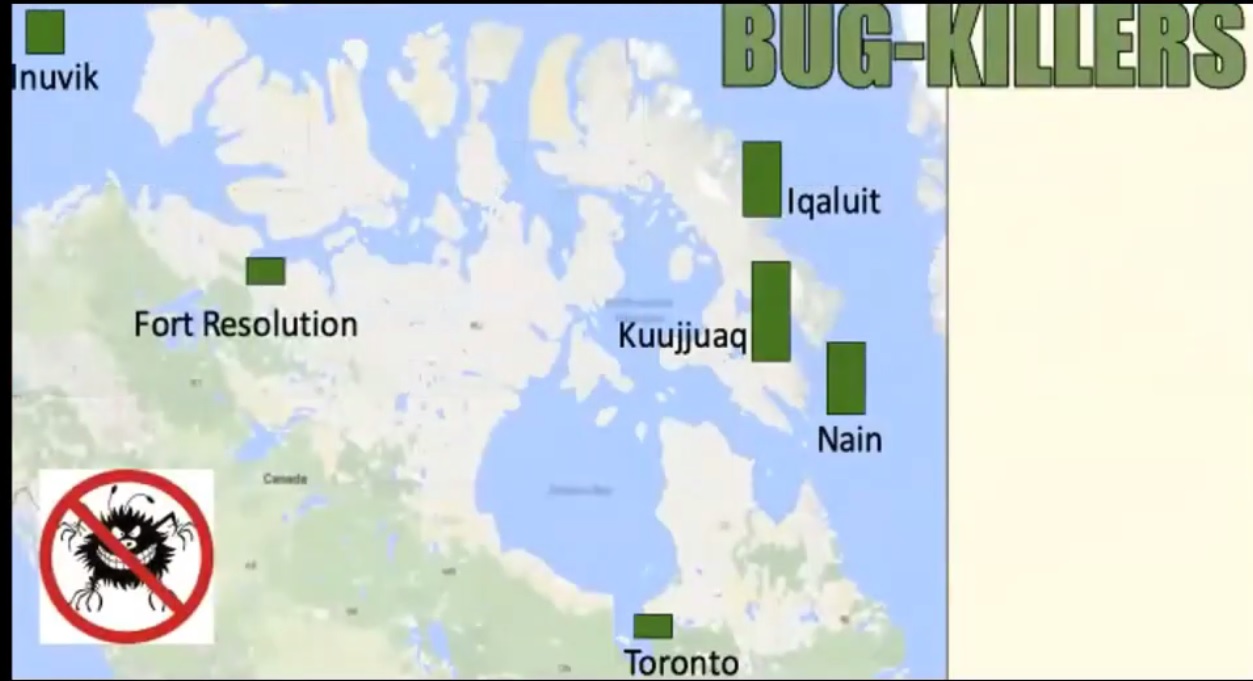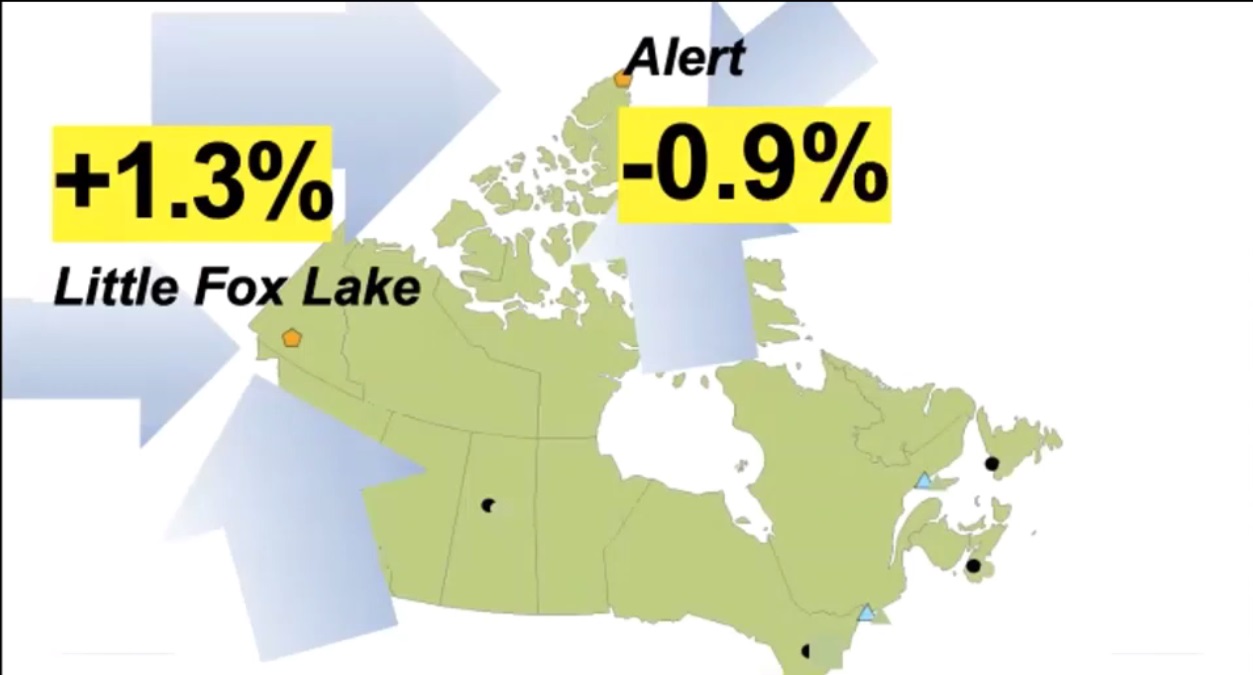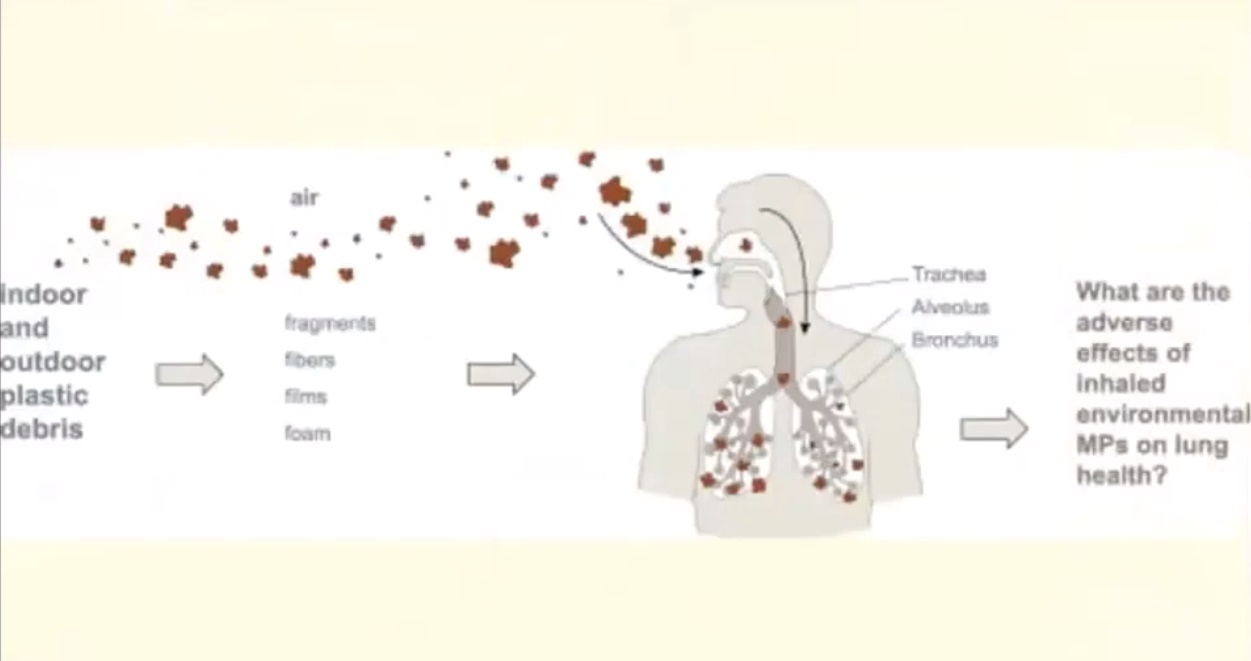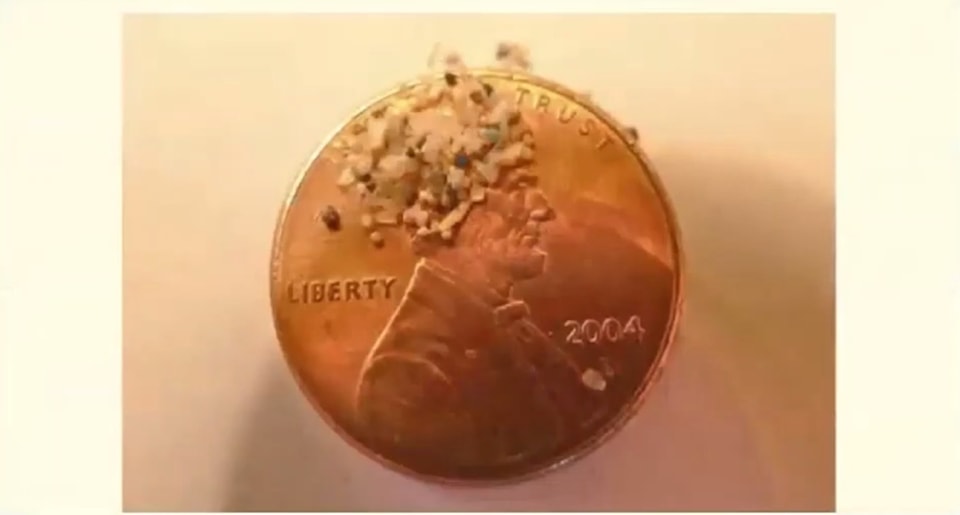Pesticides, microplastics and other chemicals are contaminating Arctic air, water and food chains.
That’s the summary of research from the Aurora Research Institute (ARI’s) April 9 virtual speaker series presentation. “Assessing Arctic Air” looked at how pollutants make their way through the atmosphere and into northern ecosystems.
Three Environment and Climate Change Canada (ECCC) scientists explained their research in the presentation. They collect most of the data in Alert, Nunavut and Little Fox Lake, YT. Several passive sampling station across the northern coast of Canada, including Inuvik. Stations trap mercury in a net of either carbon or gold and persistent organic pollutants (POPs) use a trap made from containers of foam or small plastic beads. Scientists analyze the samples in Toronto.
“Contaminants refer to potentially harmful toxic substances not normally found in the environment,” explains ECCC researcher Hayley Hung. She studies human-made chemicals found in air in sensitive ecological systems such as the Arctic and the Great Lakes. Particularly, she’s looking for mercury and micro-plastics, as well as persistent organic pollutants (POPs).
These are of particular concern in the Arctic because environmental processes can cause them to accumulate faster than they degrade. A lot of animals can mistake bits of plastic for food. Some of the contaminants make their way up the food chain until they’re affecting large animals like caribou, belugas and people. Other contaminants, like mercury, pesticides and industrial emissions travel through the air to the North.
Pesticides accumulating in the North
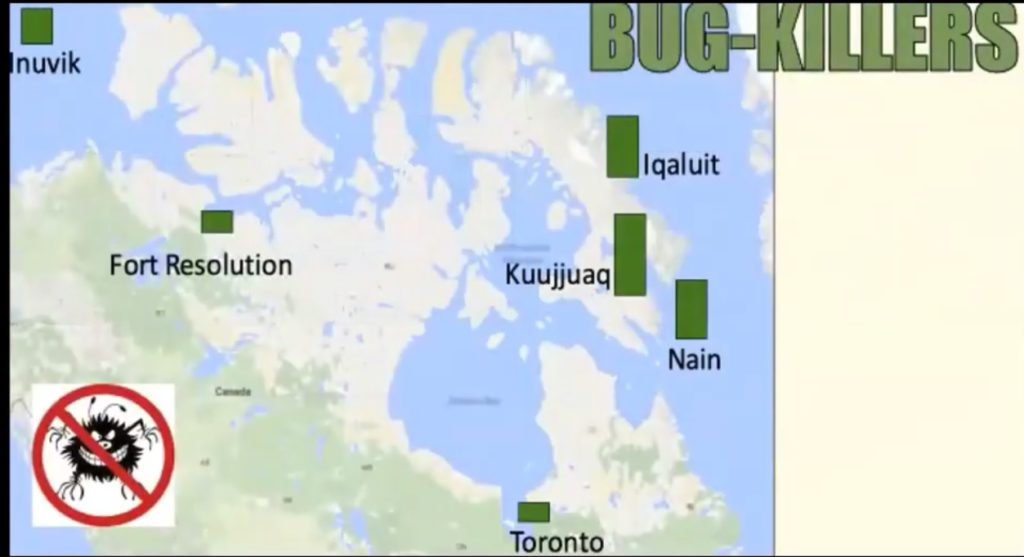
Carbon-based chemicals used in pesticides, flame retardants, stain repellents and microplastics, POPs contaminating Arctic rivers can take hundreds of years to break down. Found in tailpipe exhaust, emissions from the tropics ride warm air northward to get deposited by cold air at the poles.
Hung said measurements of pesticides in the air around Inuvik was double, and Iqaluit, Kuujuaq and Bain were all near triple the concentration in Toronto. Pesticides measured in Fort Resolution were comparable to Toronto. Flame Retardants measured in the air were dramatically higher around Toronto than in the North.
“Contaminants from around the world travel to the Arctic and gather in the Arctic,” said chief mercury researcher Alexandra “Sandy” Steffen. “These contaminants stay in the Arctic. The primary route of exposure is through consumption of country food that contains these contaminants which can be unhealthy for humans.”
Mercury levels quadruple
Steffen specializes in trying to understand and explain how mercury behaves in the air. She runs several mercury sampling programs to understand the levels of mercury in the air on local regional and global scale. She also sits at the negotiation table for Canada on international mercury-related issues.
Mercury levels in the environment have amplified by three to four times since the Industrial revolution. While examples of mercury found in nature exist, all the new mercury is coming from human activity.
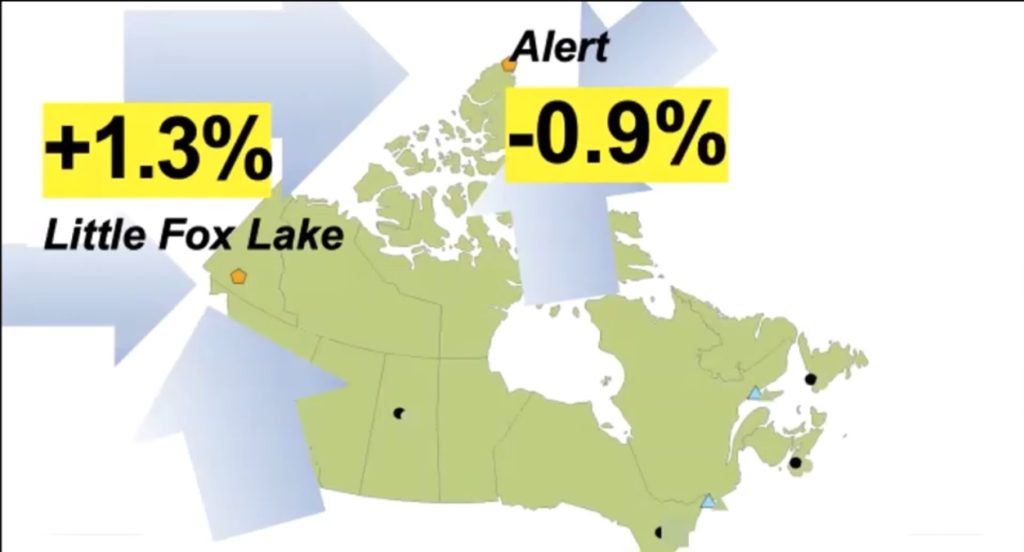
Screenshot courtesy Aurora Research Institute.
“This is because of mining activities, metal smelting, the use of mercury in consumer products, coal burning and artisanal scale gold mining,” she said. “Canada is a net recipient of mercury from outside sources. We take in more than we put out. In fact 95 per cent of the anthropogenic or man-made mercury that deposits in Canada comes from outside.”
Concentrations also fluctuate and move. Steffen said that mercury detected in Alert had decreased by nearly 25 per cent in 25 years. But concentrations in Little Fox Lake had increased by 16.9 per cent in 13 years. She attributes the change to increased industrialization in Asia and improvements in emission standards in North America and Europe.
Microplastics are everywhere
As plastic moves, abrasion causes pieces to chip off, eventually eroding into tiny fibres millimetres thick. Some are no bigger than grains of sand. Because hydrocarbon-based plastics don’t break down into their base elements, the fragments get smaller and smaller. Eventually something eats one and it begins to accumulate in the food chain.
“Microplastics are carried by winds and by rivers and oceans so we find plastics everywhere,” said Liisa Jantunen. She is a chemist who’s been researching contaminants in air and water in the Arctic for the 28 years. “We find them in the deepest Arctic sediments, we find them in high elevation mountains, they distribute themselves all over the world.
“We are living in a world polluted with microplastics.”
Plastic bags and clothing like blue jeans both break down into microplastics. Textiles in particular create microplastics in their manufacture and their use. The manufacture of raw plastic itself also creates microplastic waste.
Jantunen added plastic products often feature other contaminants, such as flame retardants. Microplastics can also attract other contaminants, like mercury and other metals.
Not just in the food
While most people think of microplastics being in food, Jantunen said a recent study discovered most of the exposure to humans was through breathing.
“It's in the air you're breathing right now. They’re quite tiny so they actually are quite buoyant,” she said. “They’ll stay in the air and they’ll travel. They can clump together and can undergo reactions in the atmosphere just like other chemicals do.
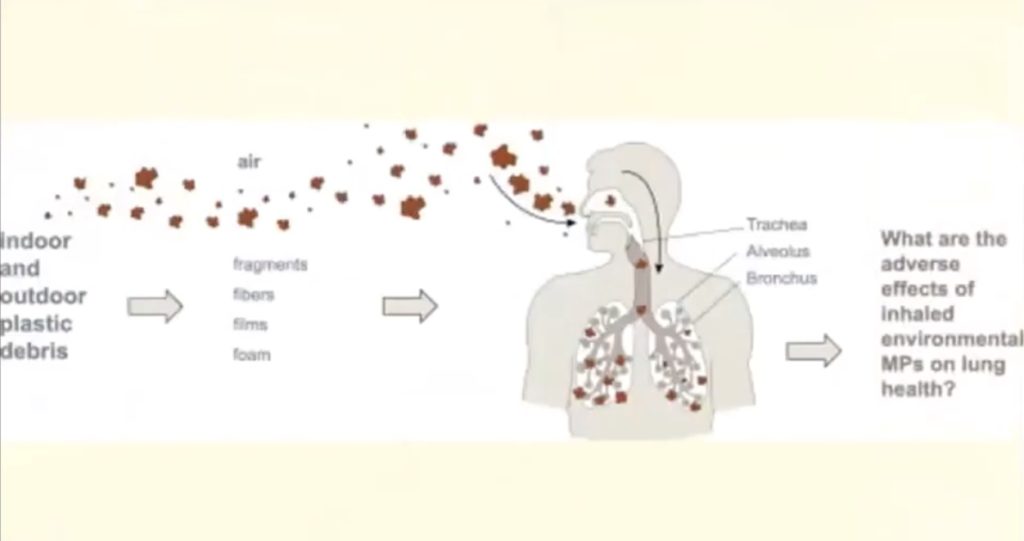
“We don’t understand quite the proportion of how much travels into the air and how much travels via oceans and rivers. We’re working with different groups to get a better understanding of this so we can actually put microplastics into the global models that we have for other particles.”
Funding for the research into pesticides, microplastics and other chemicals contaminating the Arctic comes from the Northern Contaminants program, the Chemicals Management plan and ArcticNet. Funding also comes from the international Arctic Monitoring and Assessment program. Its developed in partnership with Indigenous communities throughout Canada and informs both federal policy and international negotiations.
Watch the presentation
